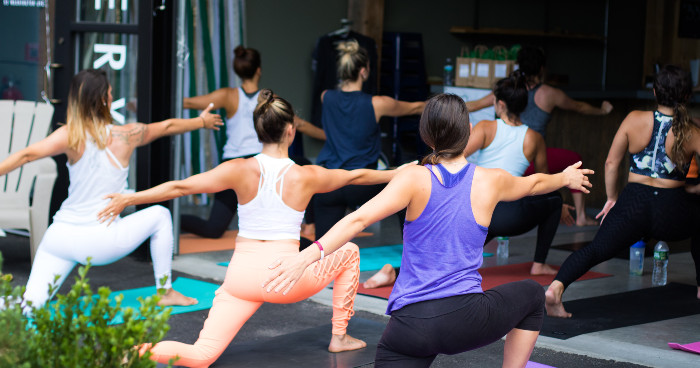The quest for holistic health often sees individuals jetting off to exotic locations, meditating on mountain tops, or delving deep into rejuvenating wellness treatments.
However, retreats, like any other holiday or experience, come with a price tag, and it’s crucial to know what you’re getting into. Here’s a detailed look at the costs associated with retreats, the factors influencing them, and ways to finance this investment in your well-being.
Understanding retreat varieties

Retreats are not a one-size-fits-all solution. The world of retreats is as diverse as the needs and desires of those seeking them. From soul-searching in serene ashrams to indulging in luxurious spa treatments, each type of retreat offers a unique experience. But with the varied offerings come different price points, making it critical to understand the nuances of each retreat type.
- Yoga & Meditation Retreats: Often found in places of natural beauty like Bali or India. Costs range from $500 to $3000, depending on the duration and location.
- Wellness & Spa Retreats: These high-end retreats offer treatments like massages, thermal baths, and detox programs. Prices can range anywhere from $1500 to $7000.
- Digital Detox Retreats: Growing in popularity, these retreats focus on disconnecting from technology. Starting at $1000, they can go up to $4000.
The diversity in retreat types means there’s something for everyone. Whether you’re on a budget or looking for luxury, there’s likely a retreat that suits your needs.
Key cost factors to consider
Beyond the retreat itself, there are associated expenses that can affect the overall cost of your rejuvenating journey. Embarking on a retreat is about more than just the retreat fees. The journey encompasses travel, the experiences on offer, and sometimes, those unexpected costs that can catch you off-guard. By familiarizing yourself with the various components that factor into the overall cost, you can prepare a more realistic budget.
- Location: International retreats may have added travel expenses.
- Duration: A weekend retreat will cost less than a month-long one.
- Included Amenities: Workshops, gourmet meals, or excursions can add to the cost.
- Accommodation Type: Shared rooms are cheaper than private suites.
It’s essential to consider all possible expenses when budgeting for a retreat to avoid surprise costs.
Bundled retreat packages vs. À La Carte
Should you buy a complete package or curate your own retreat experience? Each approach has its pros and cons.
Once you’ve set your sights on a retreat, the next major decision is how you experience it. While some prefer the ease and often discounted pricing of bundled packages, others cherish the freedom of tailoring their journey with à la carte options. Both avenues have their merits, and the choice depends on individual preferences.
- Bundled Packages: Often more convenient and can offer value for money. But they may include services you don’t necessarily want.
- À La Carte: Offers flexibility to choose only what you want. However, it may become more expensive as individual services might cost more.
Depending on your specific needs and the kind of experience you seek, choose between a bundled approach or a customized one.
Quality over cost?
It’s an age-old question in nearly every purchase decision: is it worth paying more for perceived higher quality? When it comes to retreats, this debate becomes even more complex. With our well-being and relaxation at stake, understanding the real value behind the price tag is paramount.
Higher-priced retreats often have experienced instructors, luxurious accommodations, and gourmet meals. Remember that a higher price doesn’t always guarantee a better experience. It’s essential to research and read reviews.
It might be worth spending more for a transformative experience, but always do your homework.
Financing your retreat

If the retreat of your dreams seems out of reach financially, there are options to make it more attainable. Dream retreats often come with a dreamy price tag. But financial constraints shouldn’t be the barrier between you and your ideal rejuvenating getaway. In today’s world, various financial avenues can make these seemingly lofty dreams a tangible reality.
- Savings: Start a dedicated retreat fund and contribute to it regularly.
- Early Bird Discounts: Booking in advance often comes with cost benefits.
- Loans: If considering credit, personal loans might be the most suitable. Ensure you understand the terms and interest rates.
While it’s tempting to make impulsive decisions, always ensure any financial commitment aligns with your current economic status.
Latest retreat trends
As the globe grapples with environmental concerns, the travel and leisure industry is seeing a transformative shift. Retreat-goers are now not just seeking personal transformation but also wish to make choices that are in harmony with the planet. Eco-conscious retreats are emerging as a favorite, marrying personal well-being with planetary care.
Retreats that focus on sustainability use local produce, and have eco-friendly accommodations are gaining popularity. While they might sometimes be pricier due to the sustainable practices involved, many find the extra cost worthwhile for the peace of mind it brings. Staying in tune with global trends, eco-conscious retreats are a way to heal oneself and the planet.
Conclusion
Retreats can be a pathway to both physical and mental rejuvenation. While costs can vary, it’s crucial to see this as an investment in oneself. Whether you’re gifting yourself this experience or considering it as a health gift for a loved one, the suitable retreat can indeed be priceless. Happy rejuvenating!
Don’t forget to check out our other articles:

